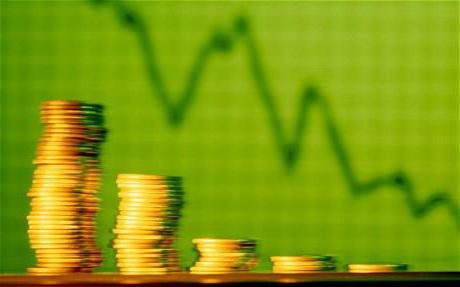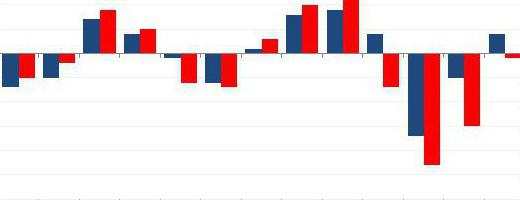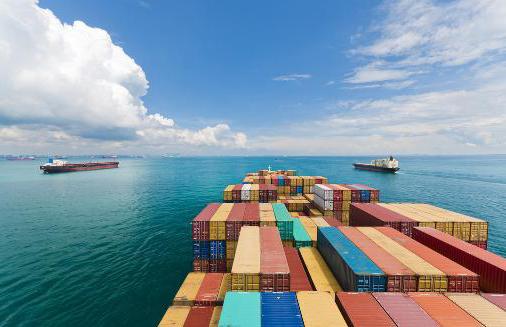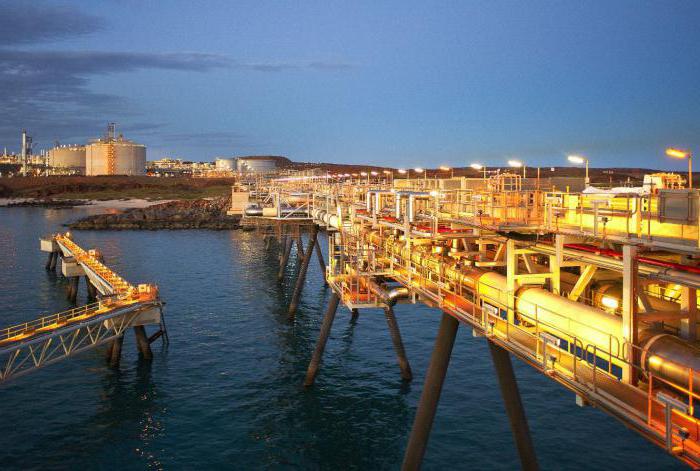Macroeconomic policy implies the achievement of a number of key goals that are critical to stability. We are talking about increasing the level of employment, lowering inflation and economic growth. The balance of aggregate demand and aggregate supply is also of great importance in the framework of stabilizing the state economy.
What is meant by aggregate demand
When it comes to aggregate demand, this refers to the actual volume of the national product that both enterprises and governments are willing to buy, regardless of price level.
It can be said in another way: aggregate demand is the sum of all expenses for services and goods that were produced in the economy. Through this indicator, the relationship between the general price level in the economy and the volume of aggregate output for which economic agents demand is reflected.
The aggregate demand function reflects the dependence of its volume on a group of factors influencing it (for example, prices).
If there is no inflation, as well as restrictions on the production side, then an increase in aggregate demand will begin to stimulate growth in employment and output. At the same time, the price level has an insignificant effect.
If the level of aggregate demand will increase in an economy that is close to full employment, then prices, rather than output, will undergo more tangible growth. This is due to the fact that at the time of growth, practically all available capacities will be involved.
Aggregate Demand Structure
If you try to structure aggregate demand, you can distinguish several of its components:
- demand for investment goods;
- demand for amateur services and goods;
- demand for goods and services from government agencies;
- demand from foreigners for export.
 There are components of aggregate demand, which can be defined as stable, since their changes are rather slow (a vivid example is consumer spending). But there are dynamic components. This category may include, for example, expenses related to investments. Changes in this group of components have sufficient potential to cause fluctuations in economic activity.
There are components of aggregate demand, which can be defined as stable, since their changes are rather slow (a vivid example is consumer spending). But there are dynamic components. This category may include, for example, expenses related to investments. Changes in this group of components have sufficient potential to cause fluctuations in economic activity.
The value of aggregate demand
The change in aggregate demand is displayed through the AD curve, which shows how the total level of all expenditures in the economy changes under the influence of rising prices.
To understand why the relationship between the general price level and the total level of all expenses can be inverse or negative, it is necessary to determine the key factors affecting the demand curve (AD): C (consumer demand), I (investment), X (net export) and G (state demand). An analysis of the impact that price changes have on these components will provide an answer to the question of dependency.
Thus, AD = C + I + G + e, where C is the demand for consumer goods from the population, I is the demand of various enterprises for investment, G is government procurement, they are also orders, e is the demand for goods from foreign buyers. Aggregate demand is equal to the sum of the impact of these indicators.
For a more accurate understanding of the picture, you need to understand the topic with the following terms:
Consumption
When prices begin to rise, the natural consequence of such a process is a drop in purchasing power. The result of such changes will be a decline in consumer activity, which will no longer buy products in the same volume as before, at more affordable prices.
Investments
The equilibrium of aggregate demand also depends on interest rates, the growth of which is a consequence of price increases. When loans become more expensive, many firms are significantly less active in relation to new investments. In other words, rising prices, affecting the availability of loans, cause a significant decrease in the actual volume of investments.
Procurement of services and goods by the state
The value of public procurement will also decrease due to rising prices. Moreover, this will happen to the extent that state budget expenditure items are determined in monetary terms.
Net export
The change in aggregate demand is also due to a decrease in net exports. This is due to the fact that with rising prices, imports of products from other countries increase, the inevitable consequence of which is a reduction in exports.
Obviously, the volume of aggregate demand depends on the total impact of these factors, which affects aggregate consumer spending.
The category of non-price factors includes those factors that affect the value of total expenses (given above). And since their impact is more than tangible, they should be given special attention.
The reasons why there is a change in total consumer spending
- Current income level. A consequence of rising incomes is increased consumption, which in turn leads to an increase in aggregate demand.
- Level of well-being. Depending on how high the value of wealth is (this is the level of well-being), the indicator of consumer spending changes, leading to an increase in the level of aggregate demand.
- Expectations When considering aggregate demand and its factors, it is important to consider two types of expectations affecting consumer spending. We are talking about expectations of a change in the level of prices (consumers make significant purchases, fearing a significant rise in price) and changes in income in the future (counting on a guaranteed increase in income, consumers increase the level of expenses in the present). All these factors lead to an increase in aggregate demand.
- Interest rates on consumer loans. The less affordable are the interest rates on loans that ordinary people take to purchase expensive goods designed for long-term use, the lower the level of consumer spending.
- Taxation. With an increase in taxes, there is a decrease in income and, consequently, consumption. Aggregate demand inevitably drops.
- Transfers The consequence of the increase in transfers is the growth of income, and hence the level of consumption.
The level of total consumer spending is also influenced by the number of consumers themselves.
Impact on investment expenses
Continuing to study aggregate demand and its factors, it is necessary to pay attention to the reasons for the change in the level of expenses incurred for investment purposes:
- Technological development. When the production process is optimized through the use of new technologies, there is an increase in investment costs and an increase in aggregate demand.
- The amount of capital stock companies. In the event that firms have a capital stock that allows them to maximize profits, they will not move in the direction of investment. Accordingly, investment demand will be the higher, the lower the value of the capital of companies.
- Overcapacity. When production resources are redundant, investment demand of companies is reduced.This is due to the fact that in conditions of underutilization of equipment that is already available, attracting new funds to increase capital is pointless.
- Taxes. Aggregate demand depends on investor activity. But with increasing taxes, return on investment decreases, which leads to a decrease in the level of financing companies and, as a result, lower aggregate demand.
- Expectations A key factor affecting investor expectations is the expected return on investment. This indicator can also be defined as the marginal efficiency of capital. If the investor's expectations are optimistic, then he, of course, will increase the share of financing various projects. With the growth of investments, aggregate demand also grows. In the event of a fall in economic indicators, investors will reduce investment costs.
- The amount of income. In order to purchase investment goods, allowing to expand production, many firms use a certain part of their own income. Accordingly, the higher the level of income of companies, the more noticeable will be the growth of investment costs.
- Interest rate. This factor has a direct impact on total investment costs. The bottom line is that investors take fewer loans for various projects at a high interest rate. Accordingly, with a decrease in investment costs, the level of aggregate demand also decreases.
- Transfers For companies, transfers are provided in the form of a preferential tax credit, subventions and subsidies. Their sufficient availability has a stimulating effect on investment demand.

Impact on net exports
Net exports have a significant impact on aggregate demand. Moreover, this factor also depends on a number of conditions:
- National currency exchange rate. When the exchange rate of the national monetary unit rises, net exports decline, which leads to a decrease in the level of aggregate demand.
- The value of gross national income and product in other countries. In this case, the growth of NP and GDP within the foreign sector causes an increase in the level of demand for services and goods of this state, and, consequently, a subsequent increase in exports. With these indicators, there will be an increase in aggregate demand.
- The value of GDP and NP in the territory of this state. An increase in these indicators in the country is followed by an increase in the activity of economic agents, which is expressed in the growth in demand for services and goods of the foreign sector. In this situation, imports will increase, and aggregate demand will decline.
As for the factors affecting the size of government purchases of services and goods, the main impact on this indicator is provided by the legislative bodies that form the state budget for the next financial year. At the same time, an increase in public procurement stimulates the growth of aggregate demand.
As you can see, the macroeconomic equilibrium is due to the influence of many factors. With competent state policy and proper regulation of the processes of aggregate supply and demand, stable economic growth is possible.
Cumulative offer
By this definition is meant the actual volume of the national product, the production of which is possible at a specific price level.
The fact of price increases encourages the company to enter larger volumes of output. If the price level decreases, then production also decreases. In other words, national output is directly dependent on price levels. A similar pattern is defined by many economists as the law of supply, the essence of which is that a decrease in prices causes a decrease in supply, and growth leads to an increase in it.
But if we evaluate this principle in the long run, we can conclude that price increases will no longer be able to stimulate an increase in production.
Aggregate Supply Factors
Understanding what factors of aggregate demand and aggregate supply affect these indicators, it is worth paying attention to price components.
Under the price factor you need to understand nothing more than their own prices of goods. It is important to highlight non-price factors of the aggregate supply:
1. Change the effectiveness of resource management.
2. Change in resource prices:
- availability of own resources of the state;
- market dominance, or monopoly;
- cost of imported resources.
3. Changes in certain legal provisions:
- subsidies and taxes to producers;
- use by the state of changes in legislation in the process of regulating economic and administrative methods.
The balance of aggregate demand and aggregate supply
Macroeconomic equilibrium is determined by the equilibrium price level and volume of production. At the same time, growth in total demand may have the following effect on aggregate supply:
- price increases with a volume of production that does not change;
- increase in actual output and price increases (partial);
- increase in real output at a price level that remains the same.
If the change in aggregate demand moves in the direction of decreasing value, then the following consequences are possible:
- when prices fall, the actual volume of production will remain at full employment;
- possible reduction in actual production and prices;
- output is declining, while prices remain unchanged.
The model of aggregate demand and aggregate supply also includes such an influence factor as the ratchet effect. This term characterizes the inflexibility of prices for resources and goods in the short term under the conditions of the modern economy. As a result, there is no downward trend in price.
Having established the fact that the ratchet effect is due to the lack of price flexibility in the short term, it is necessary to determine the reasons why prices lose their downward trend:
- most firms with significant monopoly power are able to effectively block price reductions at a time when demand is falling;
- the lack of flexibility in the formation of wages, which accounts for 75% of the costs of the company, has a significant impact on the cost of production;
- according to the terms of long-term contracts, prices for certain types of resources are not subject to change.
Studying such macroeconomic indicators as aggregate demand and aggregate supply, it is worth paying attention to the following fact: if aggregate supply increases, then the economy will move to a new equilibrium point. And at this point, an increase in the actual volume of issuance and a decrease in the general price level will be simultaneous. Thus, a decrease in the level of aggregate supply will lead to a decrease in real net national product and an increase in prices.
Understanding such concepts as aggregate demand and aggregate supply, it is important to understand that ensuring the stability of long-term equilibrium is the responsibility of the state. To achieve this goal, the government should by changing current inflation to fully expected. For this, correspondences of the money supply growth rate to the national income growth rates can be used. With the implementation of such a monetary policy, focused on stabilization and long-term trends, it becomes possible to maintain optimal economic growth rates.
Another key task of the state is the combination of the level of maximum employment with the level of equilibrium.
Financial expansion
Under certain conditions, the state can rely on policies whose goal is to increase aggregate demand.It is this strategy that is called financial expansion. By increasing the money supply, the Central Bank is able to eliminate the economic downturn. However, such actions will have consequences: prices will be fixed, but at a much higher level.
If prices rise, then demand inflation will become inevitable. The same result will be the result of increased spending by the state. Nevertheless, the policy of financial expansion has one feature that deserves attention. This is a property called the multiplier effect. This term should be understood as the total increase in national income, exceeding as a result government spending. Moreover, outstripping growth of national income will lead to employment growth and accelerated expansion of production.
Keynesian model of equilibrium
In order to determine the equilibrium level of national production, employment and income, the Keynesian model uses two methods that are closely related. We are talking about the method of “seizures and injections” and the method of comparing the volume of production and its total costs.
Considering the model of aggregate demand and aggregate supply, it is worthwhile to pay attention to the mentioned tools for determining the level of production. It’s better to start with the first method: expenses are the volume of production.
In order to successfully analyze it, certain simplifications are used:
- the economy is closed;
- there is no government intervention in the economy;
- retained earnings are not taken into account;
- price level is stable.
If you make a calculation under such conditions, the total cost will be equal to the common denominator of total investment and consumer spending.
To identify the volume of national production, it is necessary to add the investment function to this model. As a result, we can conclude that at any possible level (below equilibrium), the economy will be characterized by costs that exceed the volume of production of entrepreneurs.
Such processes can have a stimulating effect on entrepreneurs, forcing them to expand production to an equilibrium level.
Aggregate demand and aggregate supply:








